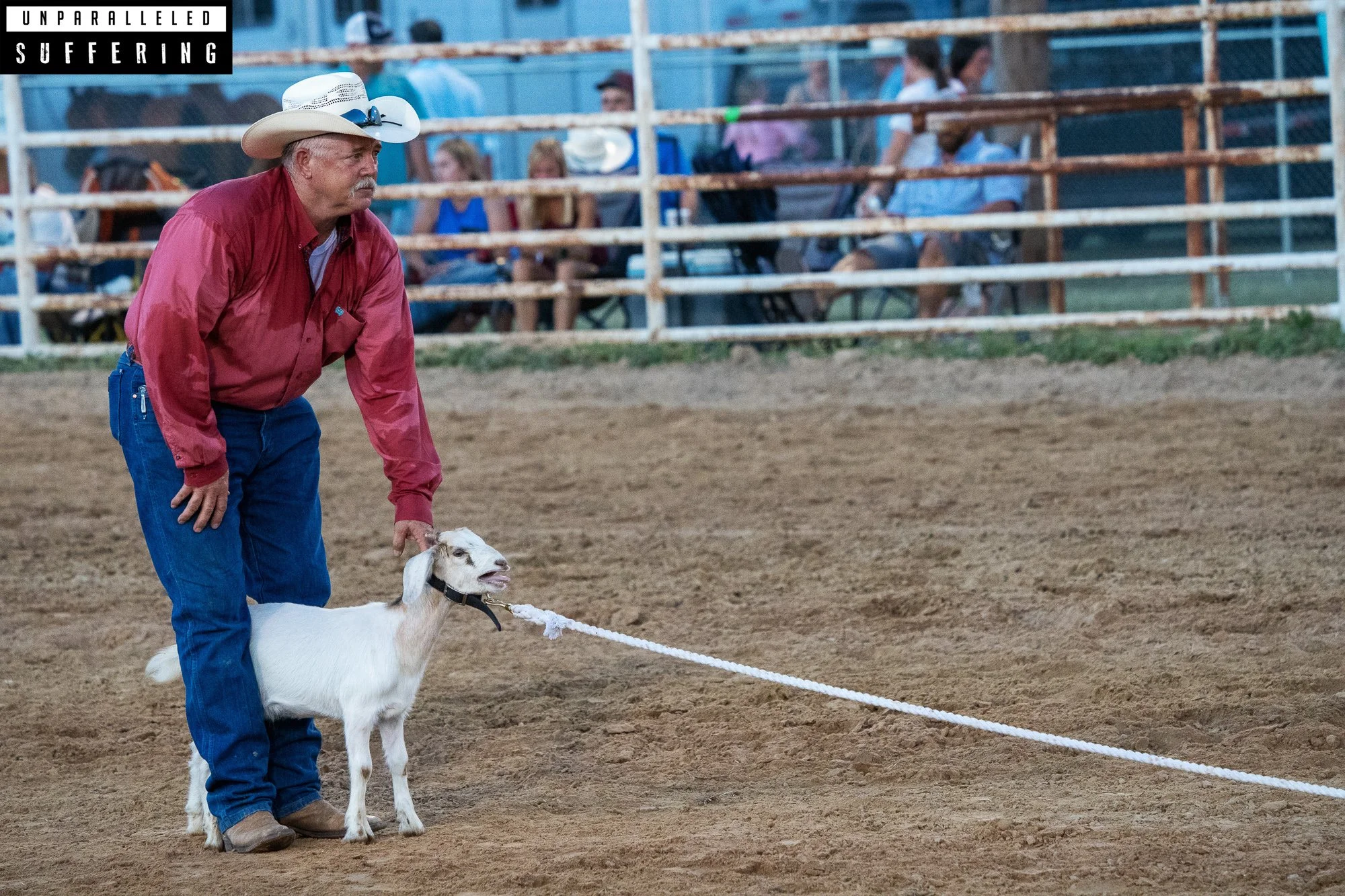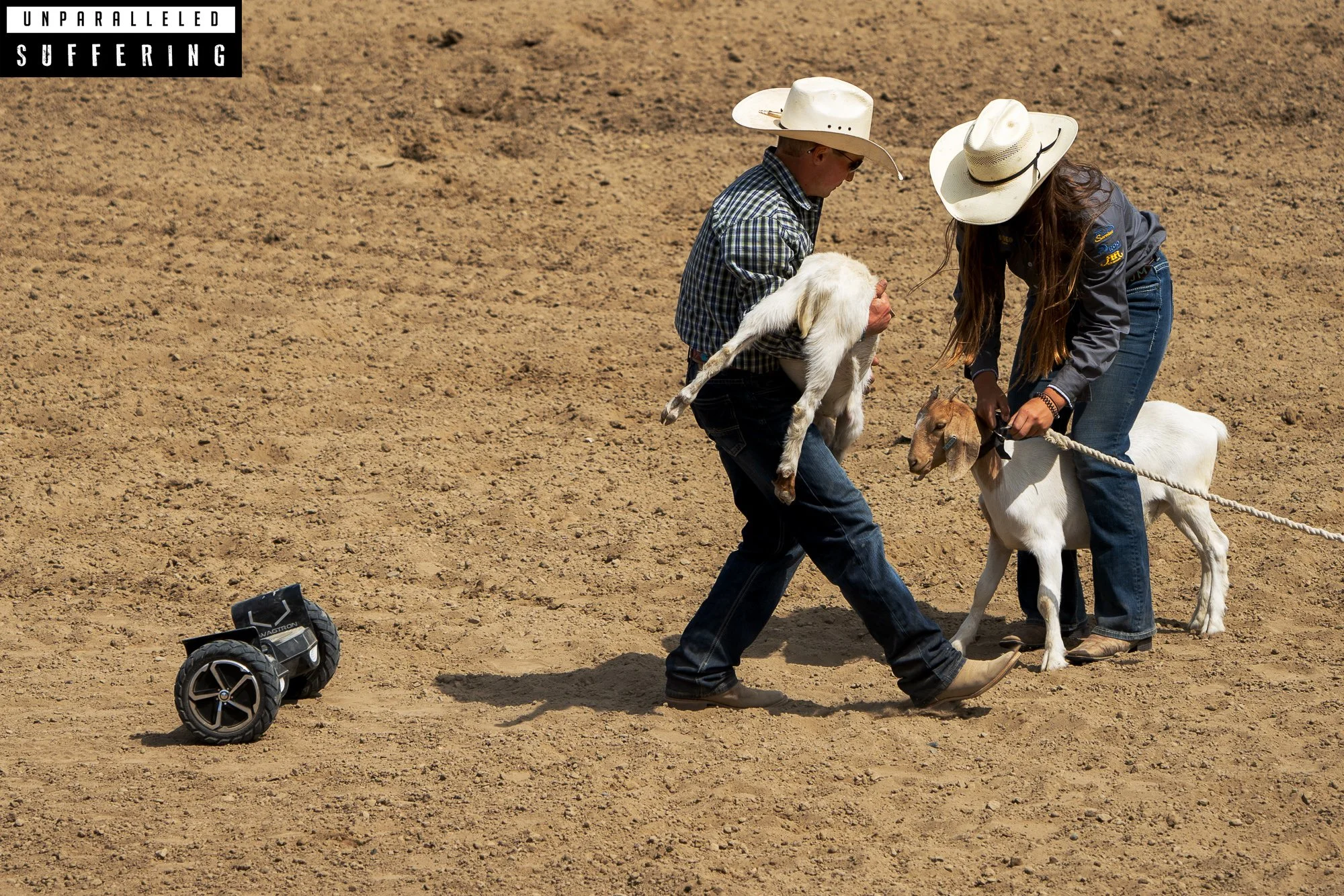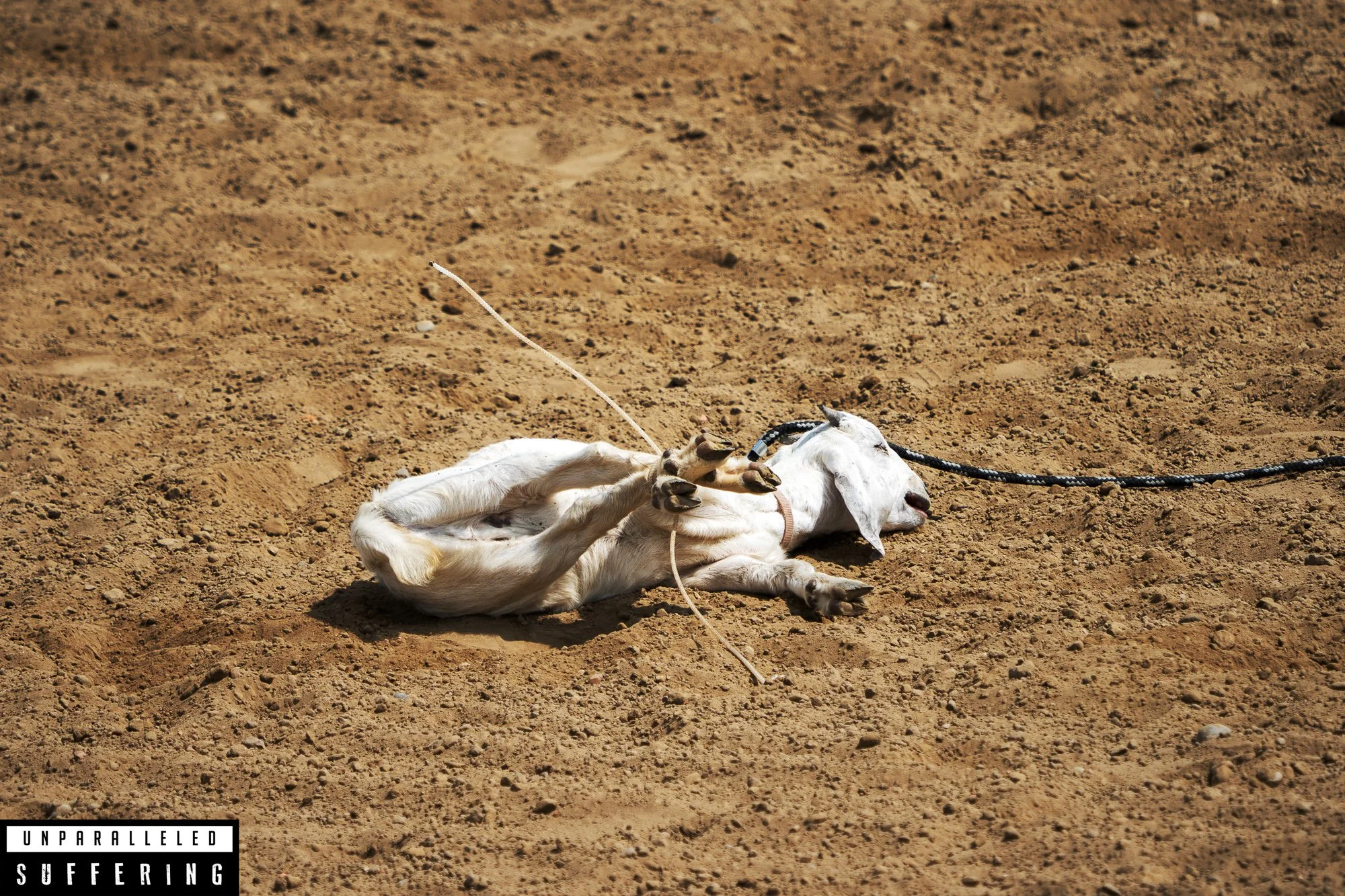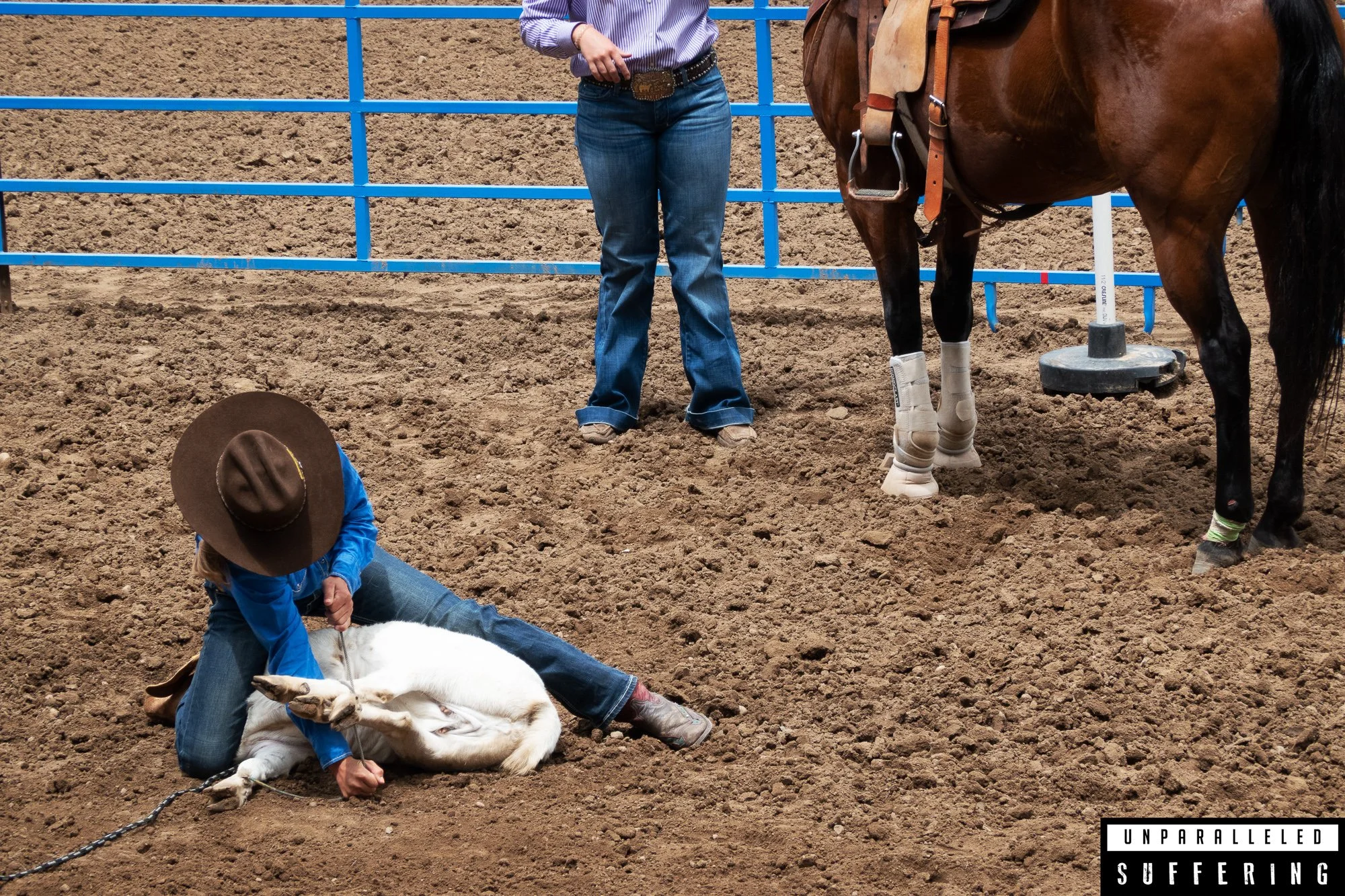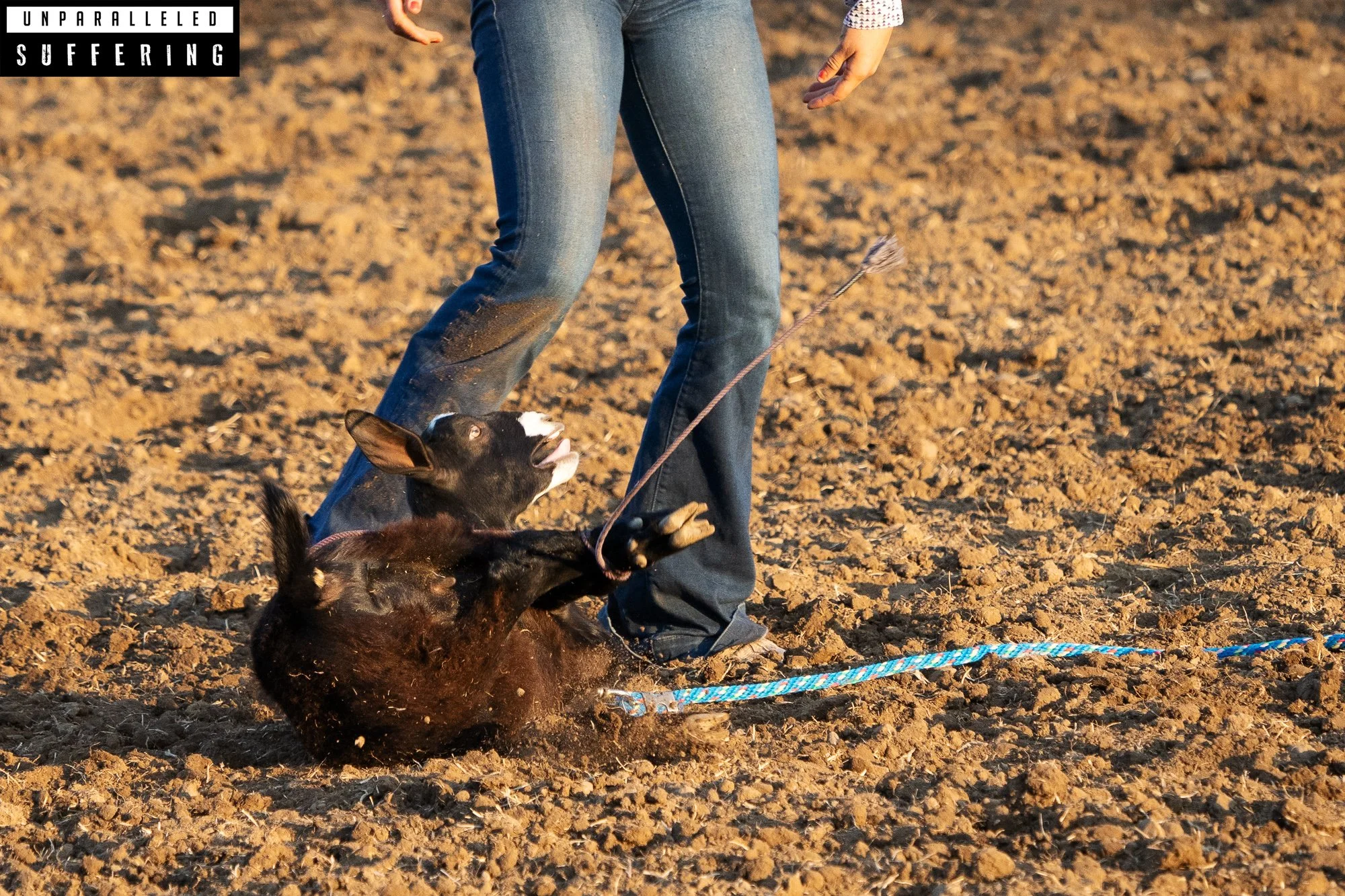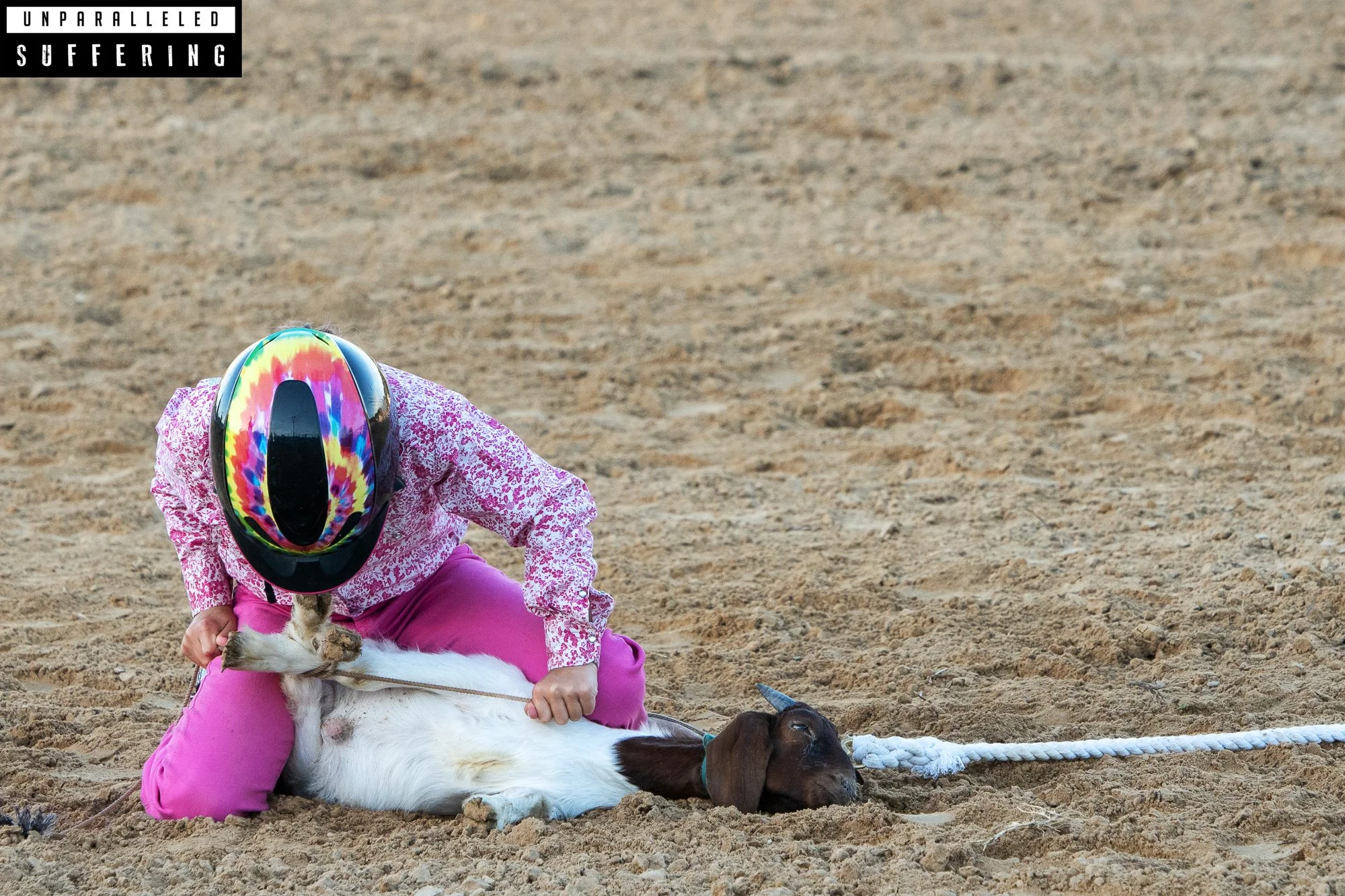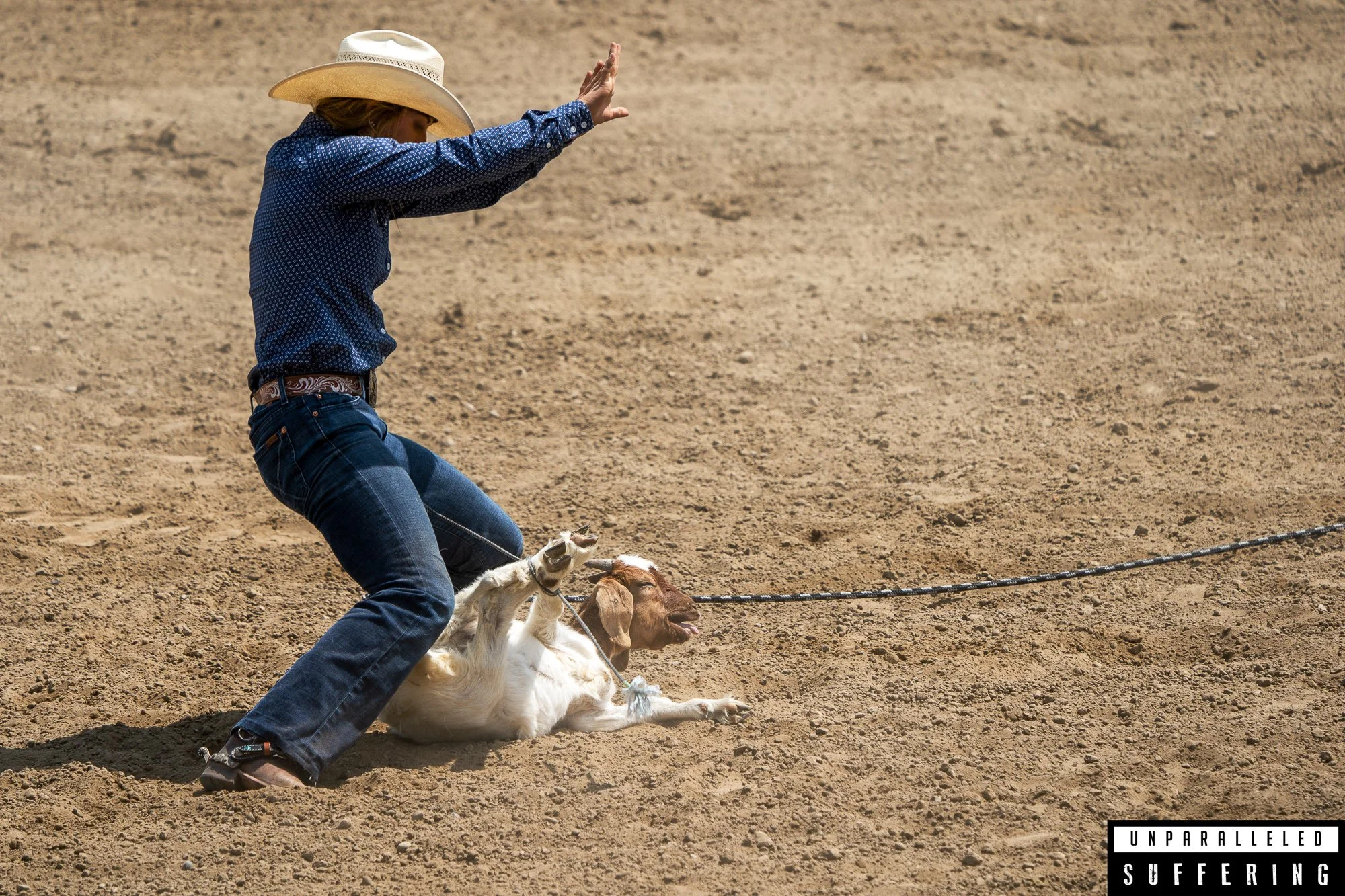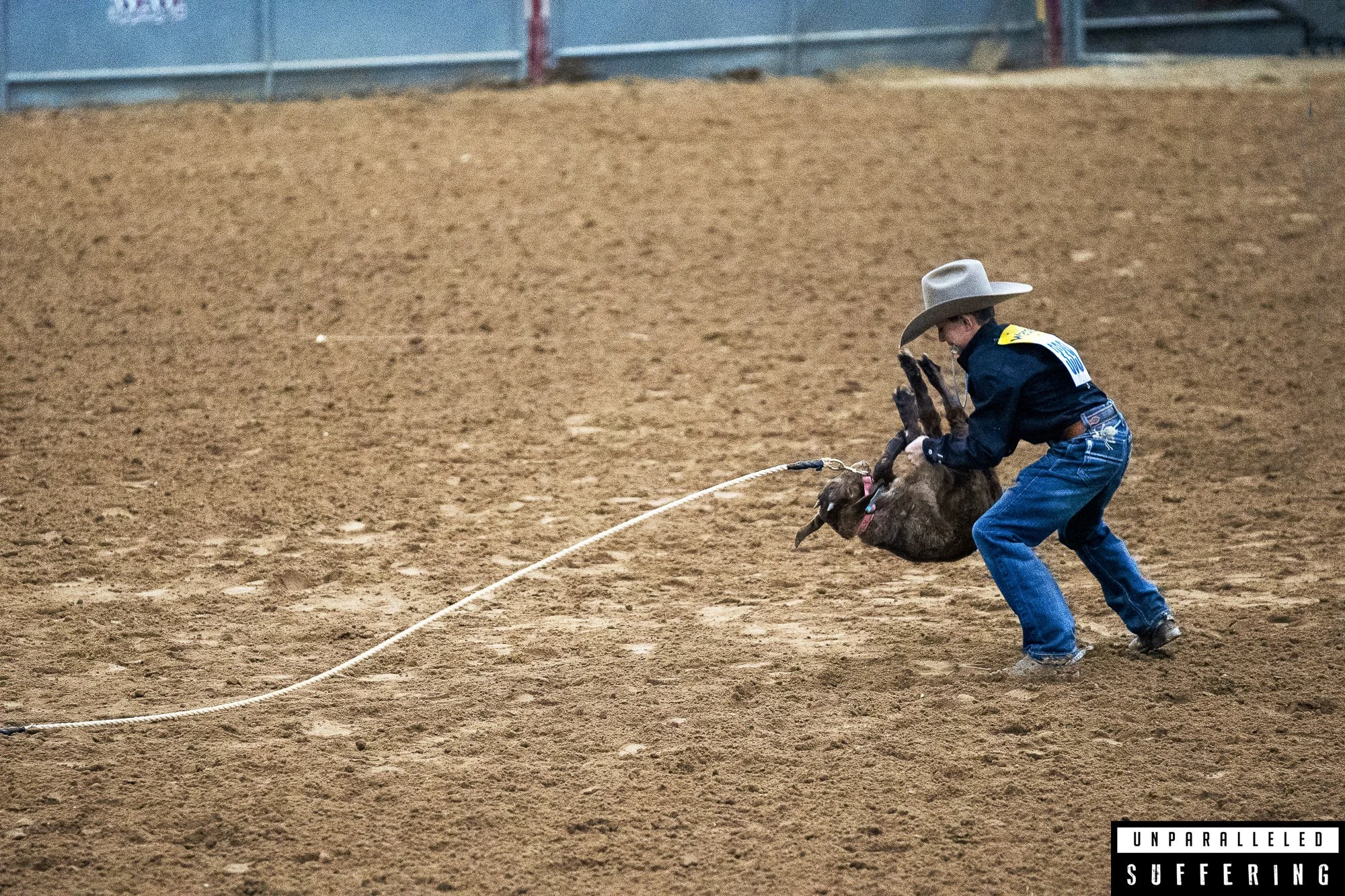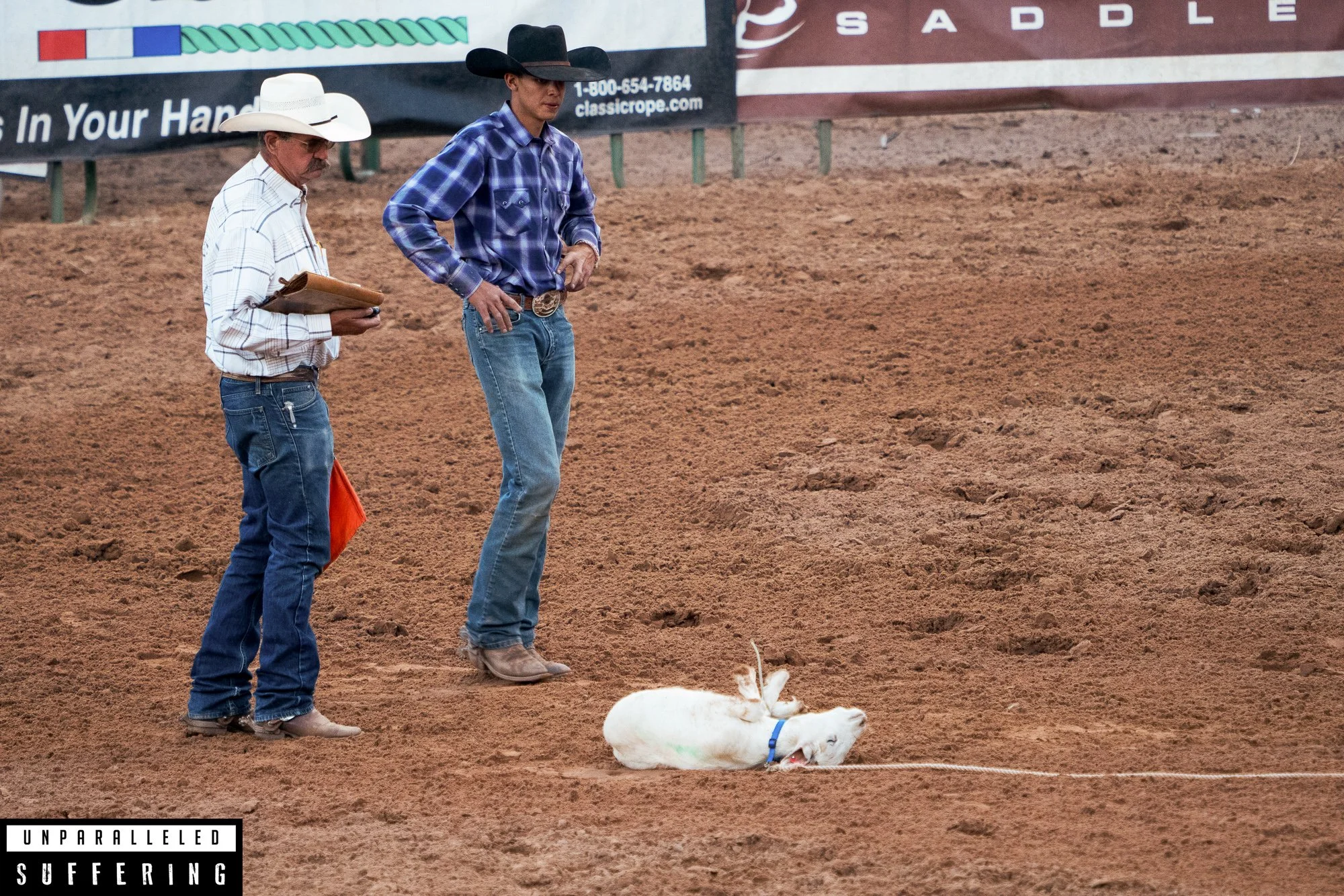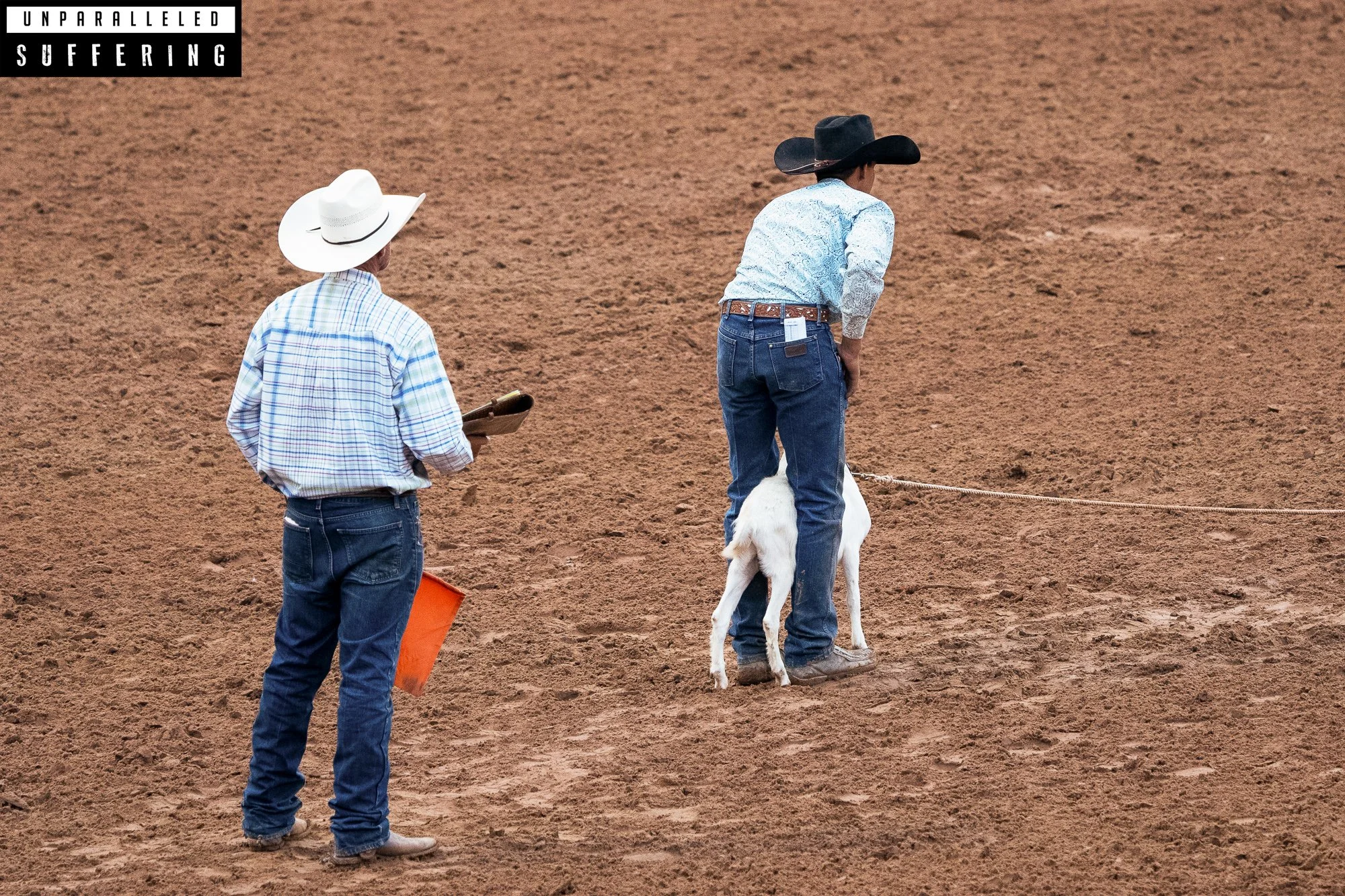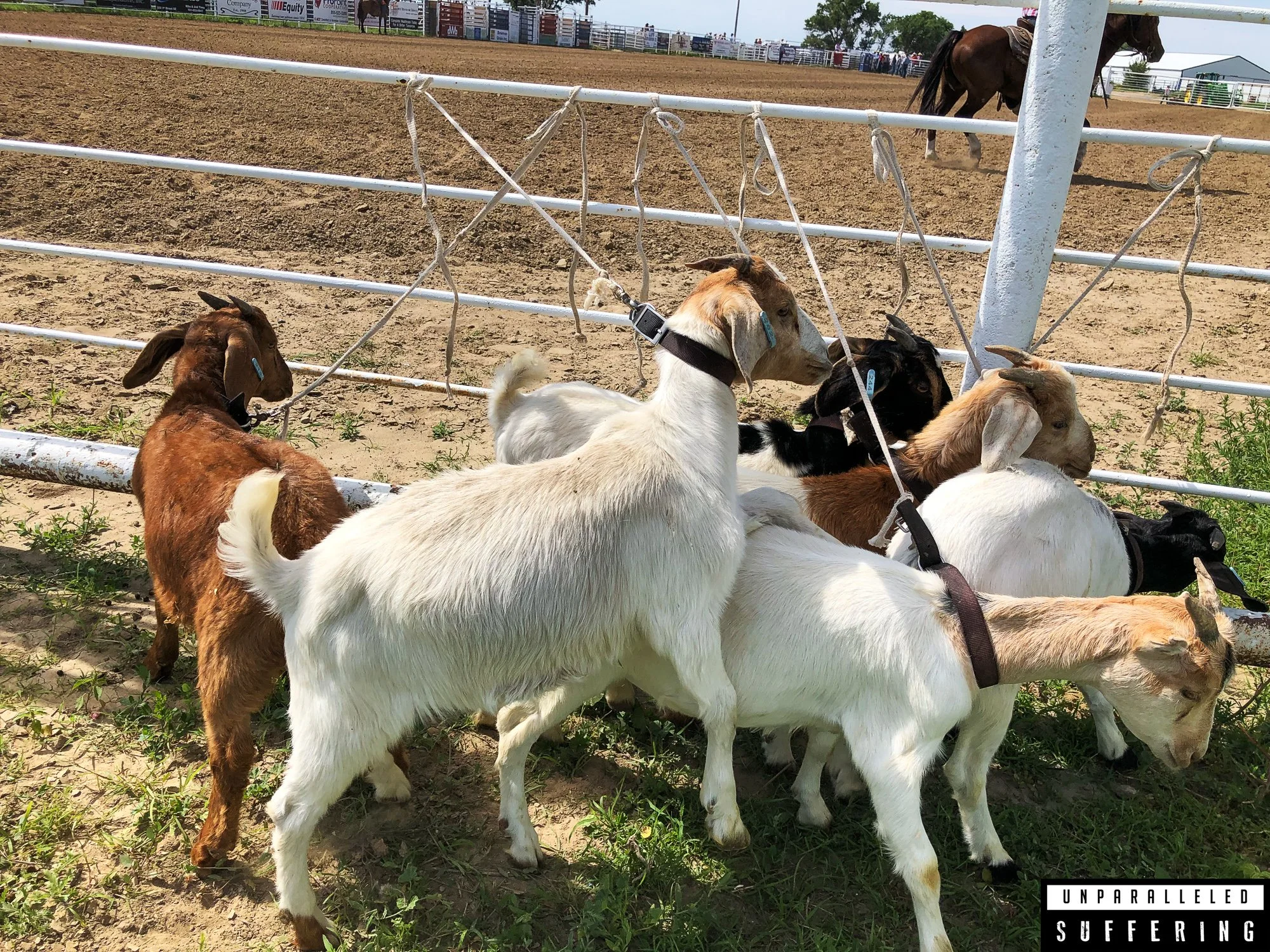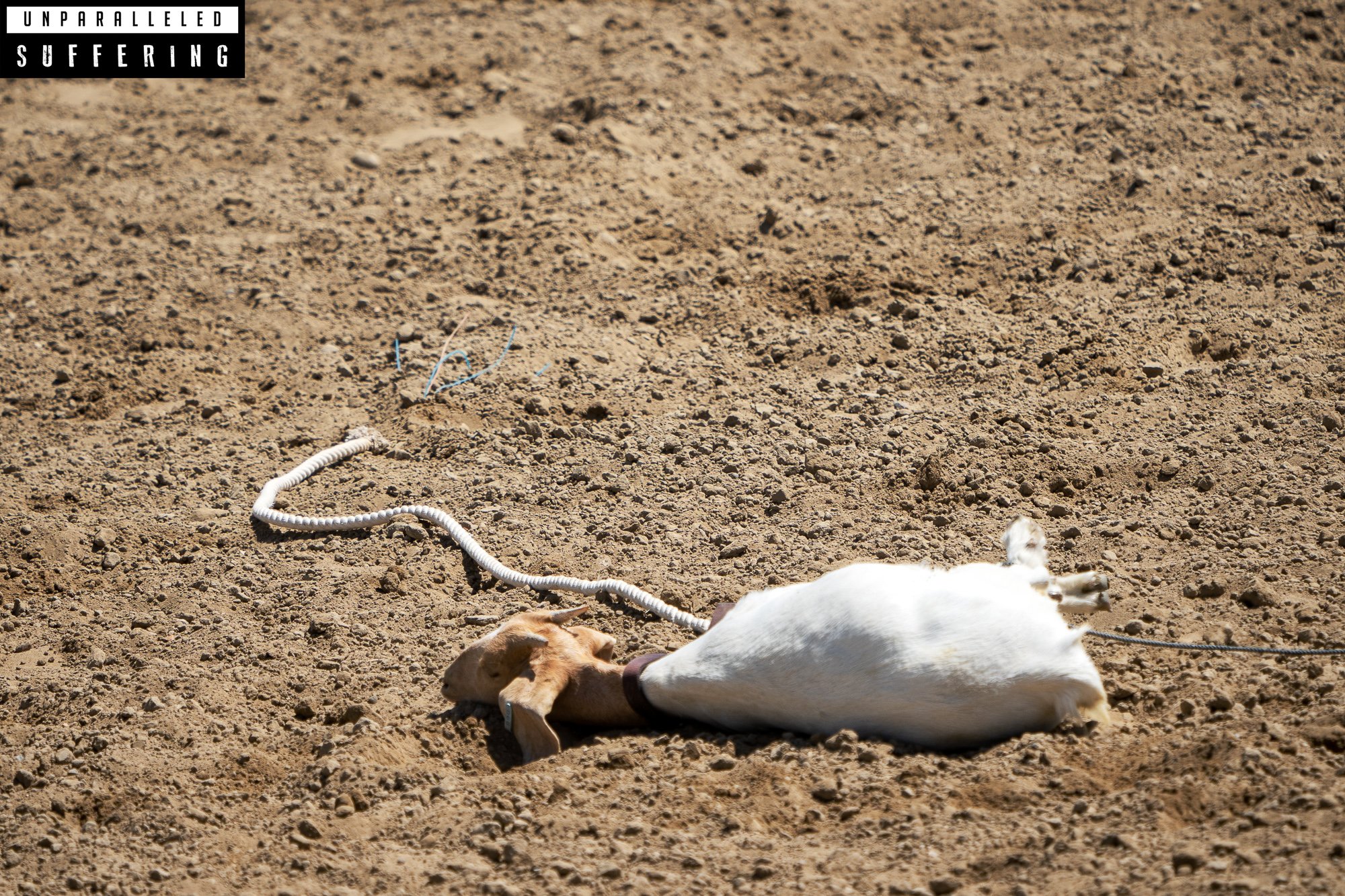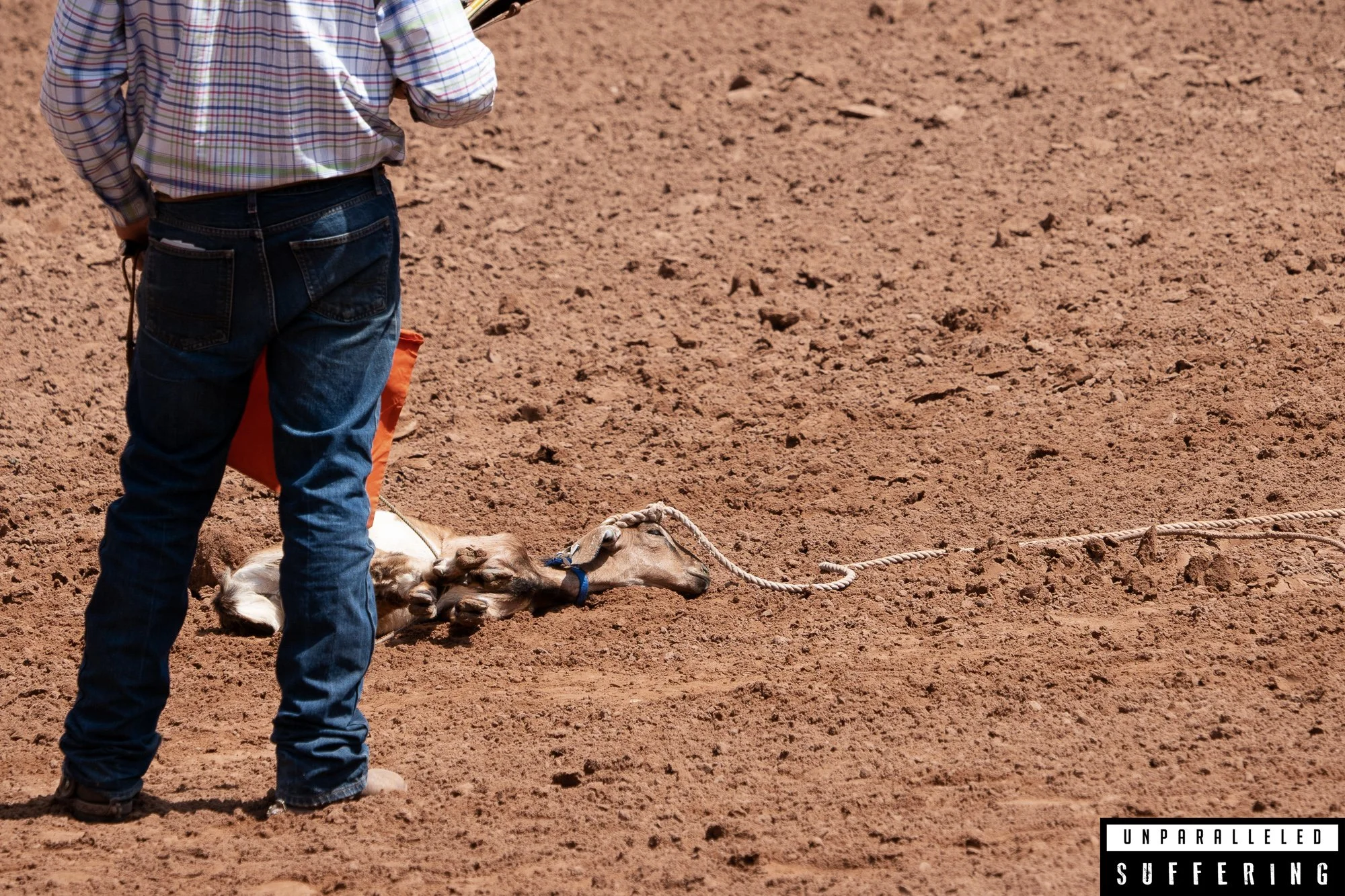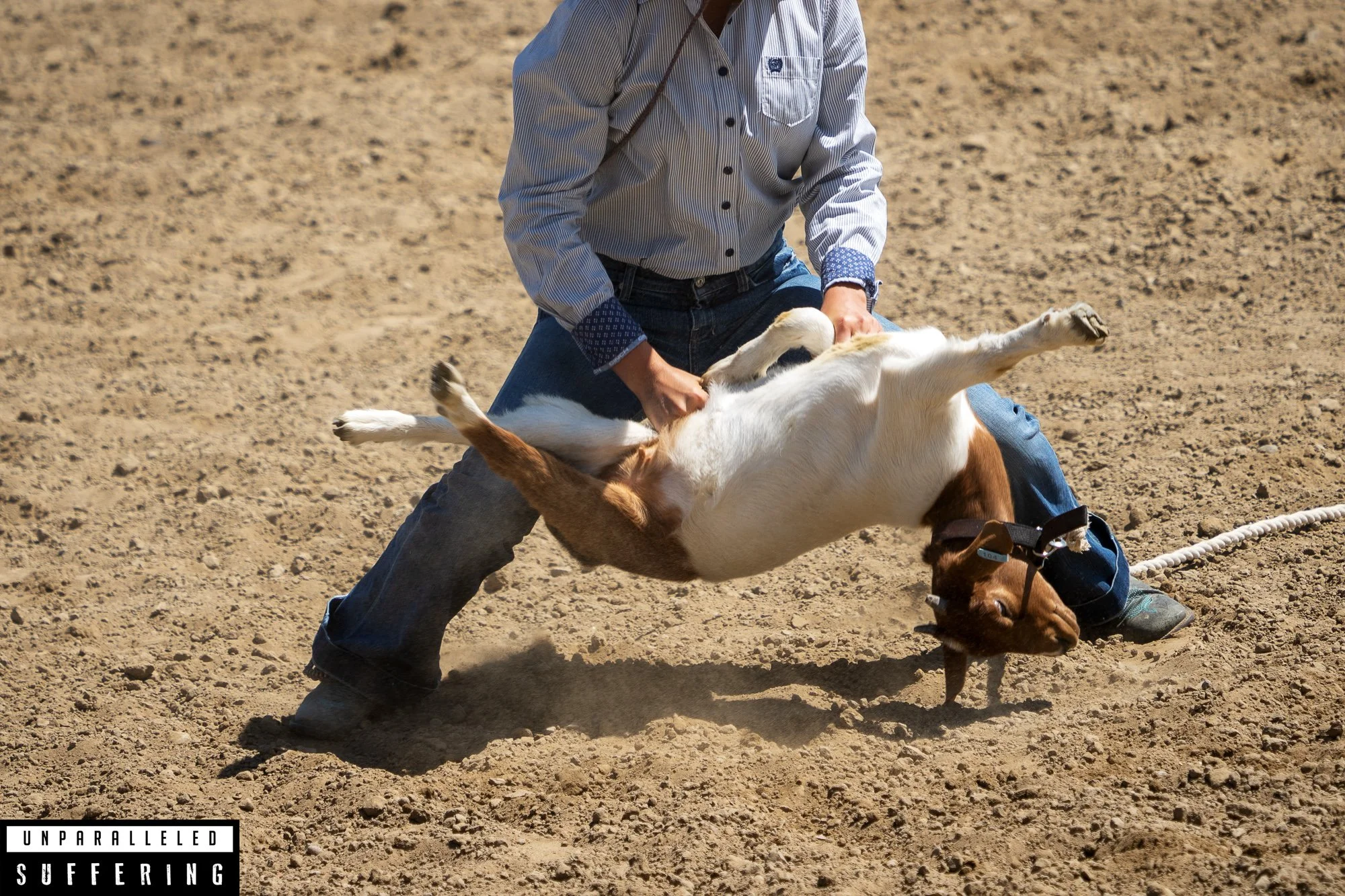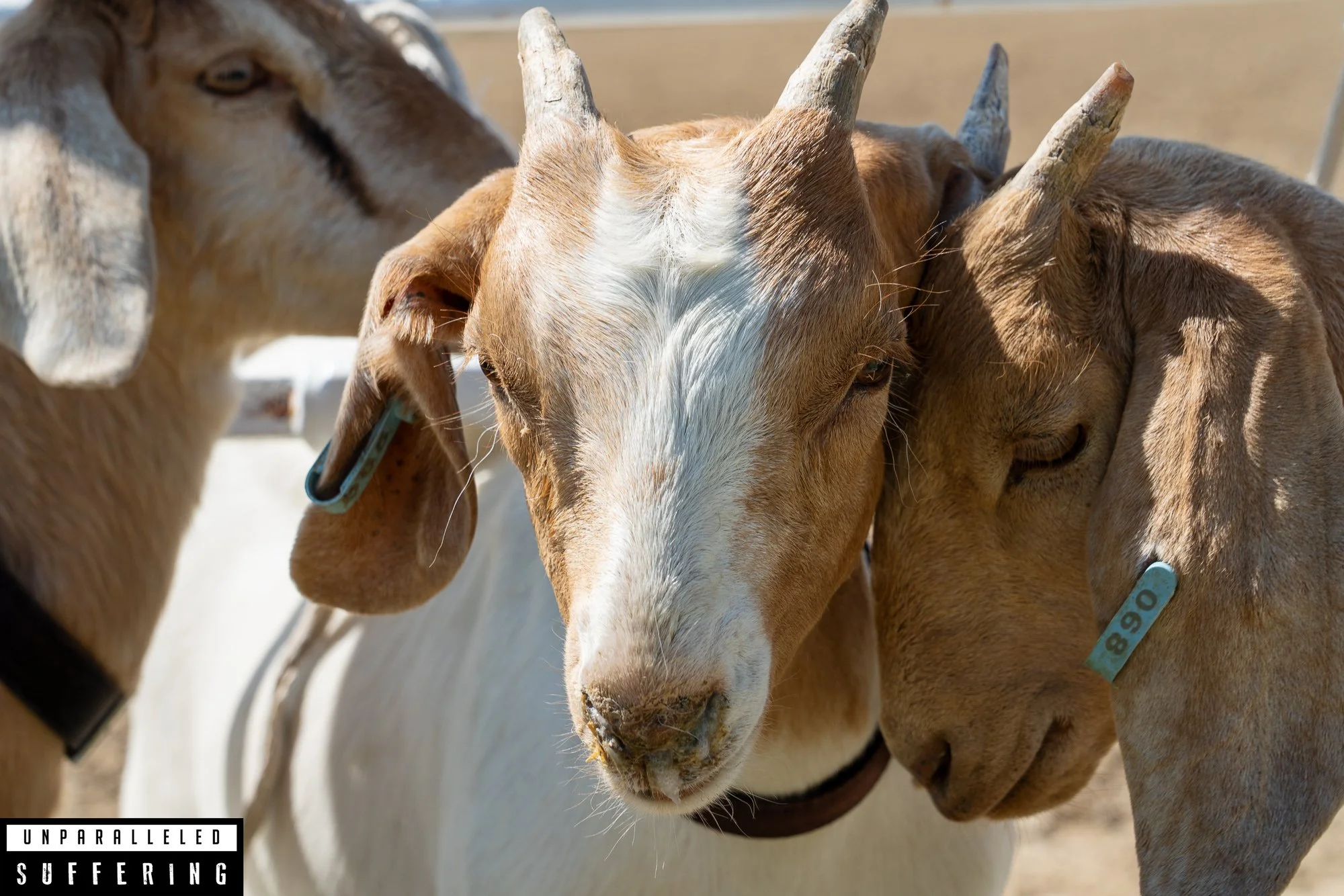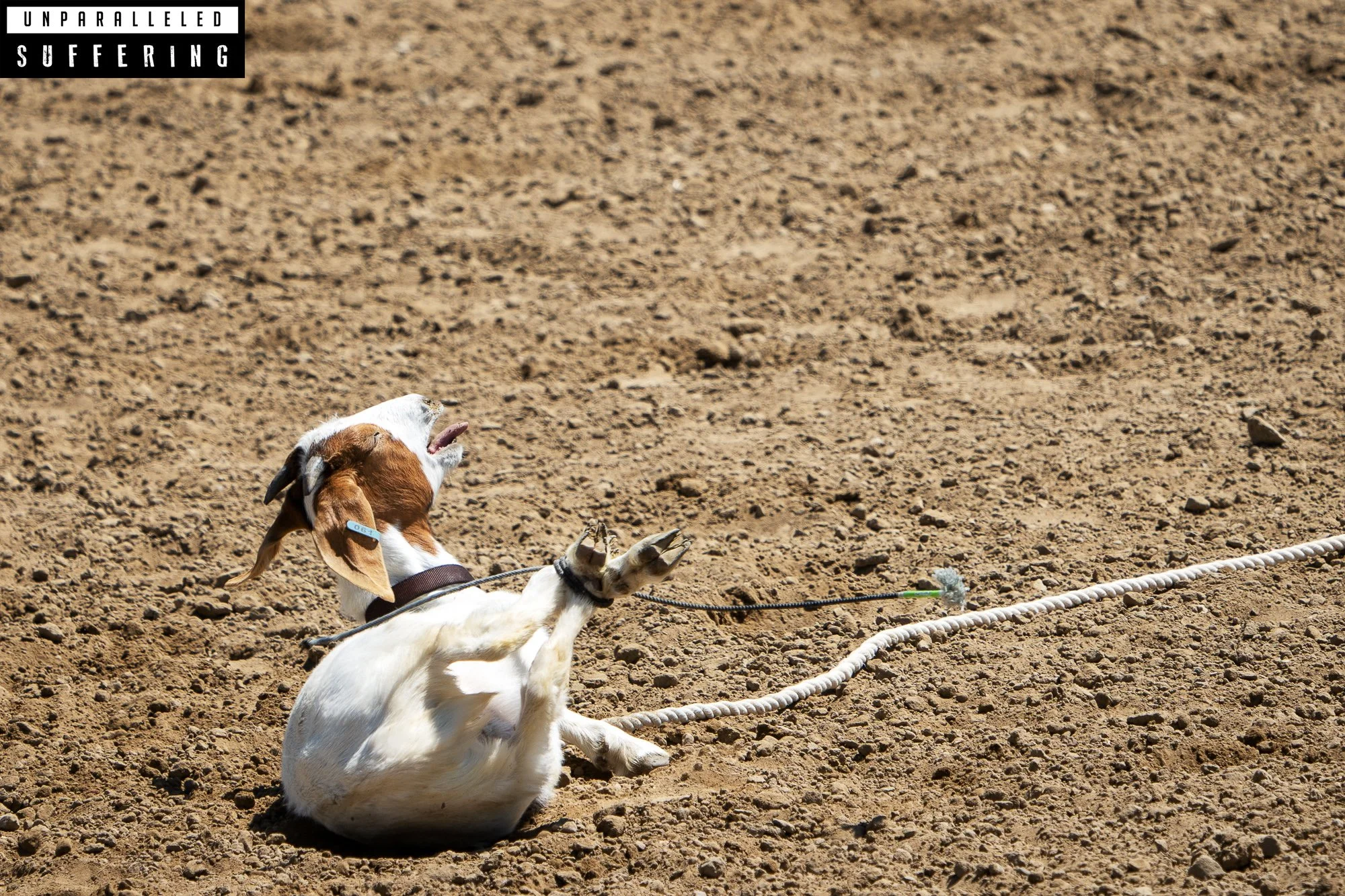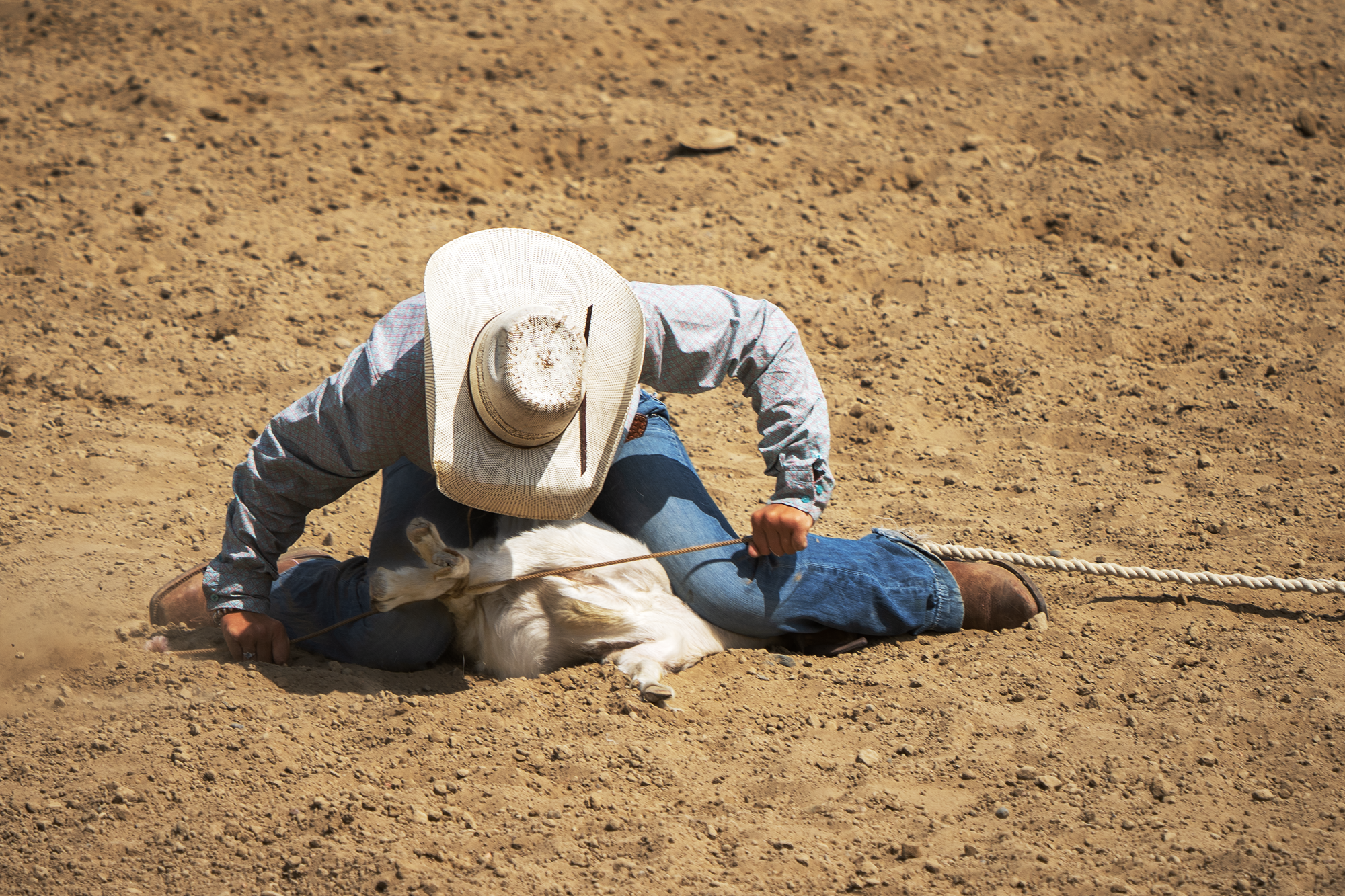
Goat Tying








-
Goat tying is a timed rodeo event with tethered goats attached to 10-foot ropes staked into the ground. Bullies chase the trapped goats down (first on and then off of their horse), roughly grab them and pick them up, slam them down on the ground, sit on top of them, and tightly ‘gather’ and tie up at least three of their legs. Goats are subjected to this rough mistreatment repeatedly until they are switched out for another goat. Like other rodeo abuses that pit humans against unwilling, disadvantaged, and helpless other animals, injuries and death are not uncommon, while stress, terror, and fear is guaranteed.
Goat tyers seek to achieve the greatest time possible and to win ‘bragging rights,’ money, advancement, and other prizes. Contestants are mostly females. Goat tying is a predominantly youth, high school, and intercollegiate rodeo activity. The professional rodeo industry does not feature goat tying competitions for adults.
Male goat tyers typically transition to tie down calf roping starting in high school while females stick to goat tying and try to make it into the College National Finals Rodeo competitions.
it's very important that they have the absolute best care and best life possible, and we make sure of that…
Stacey Elias Martin, owner of Next Level Goat Tying
-
Goats are carried or dragged over to where there’s a 10-foot rope attached to a stake in the ground. The rope connected to the ground gets attached to the goat’s collar. A handler uses their legs and/or hands to keep the goat standing in place facing forward until a flag has been waved, signaling that the contestant has crossed the starting line on the horse they are using. The starting line is one hundred feet away from where the goat is tethered. When the horse and their exploiter get near the goat the exploiter dismounts off the horse to go hurt the goat. Sometimes the goats get trampled by the horse before they are brutalized by the exploiter.
The exploiter chases after the goat with a goat tying string or "pigging string,” which they'll use to tie at least three of the goat's legs. Once they get a hold of the goat, they pick them up roughly and carelessly, usually by their forearm and flank or their collar and flank. They flip them over and push them down hard to the ground, what rodeo people refer to as ‘flanking.’
The exploiters will sit on the goat, usually on top of their shoulder and hip. They then ‘gather’ or cross at least three of the goats’ legs tightly together (usually a front and two back legs) and tie tightly and seal with their string. Once the goat's legs are restrained, the exploiter will put their hands in the air to signal that they are done and then step away from the goat. The goat's legs must not come untied for six seconds, or the contestant doesn't qualify for a time. At public events, the goats are typically used by at least 3-5 participants before they are switched out for another goat.
The National High School Rodeo Association’s rule book states: “[The] contestant must string a front leg and then cross and tie any three legs with a pigging string. There must be at least one wrap around all three legs and finished with a half hitch of hooey. A hooey is a half hitch with a loop. The tail of the string may be partly or all the way pulled through.”
It doesn’t hurt them.
Stacy McGee, Ty Tuff Goat Tying
-
Contestants typically run through goats they keep at home to practice on until they get too large, injured, die or are so traumatized that they completely give up trying to run away and therefore become unworthy for practicing on. Some people keep goats around to breed so they have a constant supply of new practice goats to use and destroy. People also practice goat tying at clinics and at practice sessions in arenas for youth, high school, and college goat tyers.
A father of a goat tyer at the Ty Tuff Championship mentioned that when the goats his daughter practices on give up running on the rope (since they know there isn't any way to escape the imminent violence), that he sells the goats to someone who will butcher them. Most of the goats from goat tying will end up at livestock auctions and will eventually be killed. All goats are considered worthless to goat tyers when they are 60 pounds or over.
Goat Tying Practice At The College national finals Rodeo
What Do Goat Tying Sadists Have To Say?
Unparalleled Suffering and a supporter called around to several people in the goat tying industry to ask some questions. The following is what we were told:
From a conversation with Stacey Elias Martin, owner of Next Level Goat Tying:
"I have probably 35 head of goats here, and they are all like pets."
"It's a wonderful lifestyle to grow up in, because these kids … learn to respect these animals. You don't see a lot of kids that are serial killers that were brought up in the rodeo lifestyle because they have a respect for life that is learned through hard work. They love their animals."
"I can promise you, just like everyone that's involved in the rodeo community, livestock shows, our animals are not just how we make our living, they also…become part of our family."
"They learn a love for things other than themselves…And I don't know any other sport that teaches more about being less selfish."
"We do everything in our power to give every one of our animals the absolute best life that they can have."
From a conversation with Deb Gunderson, Ty Tuff Goat Tying:
"They are broke in for the most part. It’s not traumatic."
"They are really not mishandled. For those who are first starting to learn, yeah, they are probably a little mishandled because the kids don’t know how to sit on them and flip them."
"You might have a goat run across in front of a horse and the horse can’t make the move quick enough to get away, so the goat might get run over but no they do not [get injuries]."
"In the bible it says humans are superior, they will rule the animals."
From a conversation with Stacy McGee, Ty Tuff Goat Tying:
"PETA is one that does not necessarily like rodeos and doesn’t understand our system either, how those animals are treated way better than us as humans. We put their health (as) athletes first. They are treated way better than we probably take care of ourselves."
"It doesn’t hurt them." (response to the goats being slammed down)
"Ummm, I guess I don’t really have a good explanation - until you’ve done it, seen it, been part of it. It does not hurt them." (response to why she thinks this doesn't hurt the goats)
"Um, that is a hard question right there I guess. Um, do you live on a ranch or anything? Do you know anything about ranching, livestock, any of that kind of stuff?" (response to if she would trade positions with the goat)
















